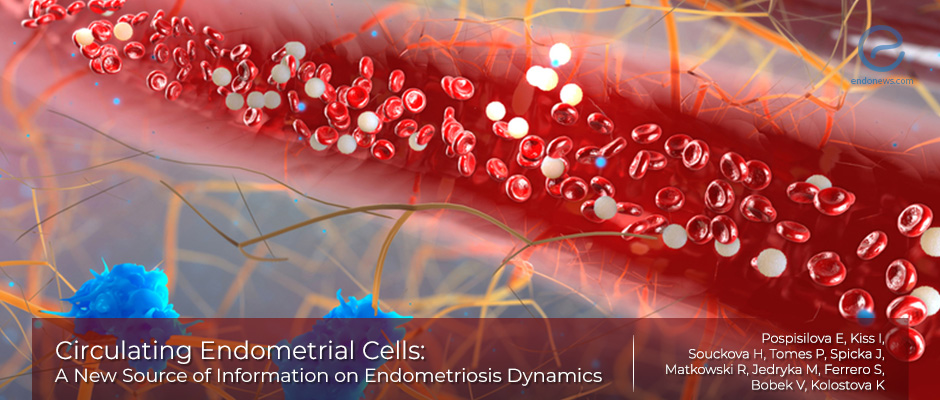Circulating Endometrial Cells
Dec 10, 2019
Blood circulating endometrial cells to diagnose endometriosis?
Key Points
Highlight:
- The study isolated circulating endometrial cells (CECs) from the peripheral blood of patients with endometriosis.
Importance:
- CECs have a specific molecular characteristic that may be useful for the diagnosis and management of endometriosis.
What's done here:
- Four hundred and twenty-three blood samples were tested for the presence of CECs.
- CECs gene expression was analyzed.
- The presence of CECs was also tested in 11 patients during menstrual cycle phases.
Data:
- 78.4% of the blood samples had CECs, although negative CECs were reported in 21.1% of severe cases.
- Presence detected in different endometriosis stages: minimal, mild, moderate, and severe.
- The mid-secretory phase of the menstrual cycle has the highest CECs numbers.
- The super-positive CECs samples had high expression of KRT18, VIM, NANOG, and FLT1 genes.
- These CEC genes could be prospectively tested for diagnostics purposes and research into understanding endometriosis pathogenesis.
Limitation:
- The study is limited by the markers that were used to identify CECs.
- It is still unclear what constitutes markers that give high certainty of CECs. Hormone receptors such as estrogen and progesterone receptors were not expressed in at least half of the cases. Therefore, it is questionable whether CECs truly represent endometriosis.
Lay Summary
Endometriosis is difficult to diagnose because of non-specific symptoms. Currently, there is no biomarker that allows for non-invasive diagnosis of the condition. Surgical laparoscopy remains the standard for diagnosis.
Circulating endometrial cells (CECs) is the lymphovascular spread of endometrial cells. It was first reported by Halban J. in 1925, who discovered endometrial cells in the lymphatic system of the uterus in women with endometriosis. Since then, endometrial cells from peripheral blood and peritoneal washings from women with endometriosis have been successfully isolated and confirmed by immunohistochemistry.
The current article published in the "Journal of Clinical Medicine" by Pospisilova et al. from Faculty Hospital Královské Vinohrady, Prague, Czech Republic aimed to isolate and molecularly characterize CECs in women with different types of endometriosis and symptoms.
The presence of CECs was examined in the blood samples collected from women with endometriosis (n = 423), and enriched by size-based separation. Gene expression on the CECs was tested, along with CECs from the different menstrual cycle phases in 11 patients. The tested genes were positive for CD68, EpCAM, KRT7, KRT18, KRT19, MUC1, MUC16, VIM, VEGFA, WT1, ESR1, PGR, HER2, CD10, FLT1, MMP1, MMP9, TP63, ESSRA, ESSRB, HIF1A, and NANOG, are believed to be endometrial-associated.
The results showed that CECs were present in 78.4% of patients with histologically diagnosed endometriosis. CECs occurred during all phases of the menstrual cycle, the highest during the mid-secretory phase, and had different cytomorphology and gene expression profile as hormone levels fluctuate. Endometriosis at different stages all had CECs. CECs isolated during the mid-secretory phase expressed higher KRT18, NANOG, and VIM genes than those isolated during the proliferative phase of the menstrual cycle. The super-positive CECs samples had high expression of KRT18, VIM, NANOG, and FLT1 genes. Thus, the gene expression profiling of endometriotic lesions and peripheral blood CECs identified a range of potential biomarkers that could be used in undiagnosed endometriosis.
These data on CECs may facilitate the management of preoperative and postoperative endometriosis therapy. Although further studies are necessary to fully understand the clinical utility of CEC. It must also be noted that CECs were found negative in 21.1% of severe cases, and this data needs to be treated with caution. CECs, after testing in a large cohort of patients, may be useful to improve the diagnosis of endometriosis.
Research Source: https://www.ncbi.nlm.nih.gov/pubmed/31717910
diagnosis circulating endometrial endometriosis cells

